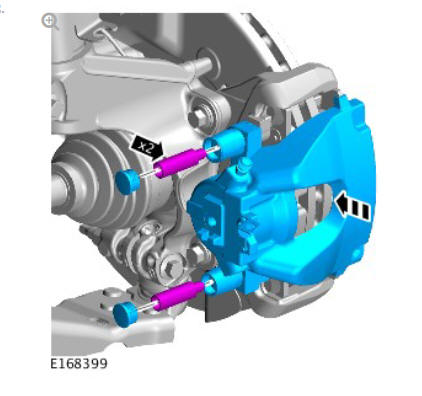Land Rover Discovery: Anti-lock Control - Traction Control / Diagnosis and Testing
PRINCIPLES OF OPERATION
For a detailed description of the Anti-lock Brake System, refer to the relevant Description and Operation section in the workshop manual. REFER to: Anti-Lock Control - Traction Control (206-09B Anti-Lock Control - Traction Control, Description and Operation).
INSPECTION AND VERIFICATION
CAUTION:
Diagnosis by substitution from a donor vehicle is NOT acceptable.
Substitution of control modules does not guarantee confirmation of a fault, and may also cause additional faults in the vehicle being tested and/or the donor vehicle.
NOTES:
- If a control module or a component is suspect and the vehicle remains under manufacturer warranty, refer to the Warranty Policy and Procedures manual, or determine if any prior approval programme is in operation, prior to the installation of a new module/component.
- When performing voltage or resistance tests, always use a digital
multimeter that has the resolution ability to view 3 decimal places.
For example, on the 2 volts range can measure 1mV or 2 K Ohm range can measure 1 Ohm. When testing resistance always take the resistance of the digital multimeter leads into account.
- Check and rectify basic faults before beginning diagnostic routines involving pinpoint tests.
- Verify the customer concern
- Visually inspect for obvious signs of damage and system integrity
Visual Inspection

- If an obvious cause for an observed or reported concern is found, correct the cause (if possible) before proceeding to the next step
- If the cause is not visually evident, verify the symptom and refer to the Symptom Chart, alternatively check for Diagnostic Trouble Codes (DTCs) and refer to the DTC Index
- Check DDW for open campaigns. Refer to the corresponding bulletins and SSMs which may be valid for the specific customer complaint and carry out the recommendations as required
PINPOINT TESTS

DTC INDEX
For a list of Diagnostic Trouble Codes (DTCs) that could be logged on this vehicle, please refer to Section 100-00. REFER to: Diagnostic Trouble Code Index - DTC: Anti-lock Braking System Control Module (ABS) (100-00 General Information, Description and Operation).
Anti-lock control specifications
Torque Specifications

Front disc brake brake caliper (G1785105) removal and installation
REMOVAL
CAUTION:
If brake fluid is spilt on the paintwork, the affected area must be immediately washed down with cold water.
WARNING:
Make sure to support the vehicle with axle stands.
Raise and support the vehicle.
Refer to: Wheel and Tire (204-04 Wheels and Tires, Removal and Installation).


CAUTION:
If the brake hose banjo bolt has been loosened or removed, a new brake hose assembly must be installed

CAUTIONS:
- Be prepared to collect escaping fluids.
- Make sure that all openings are sealed. Use new blanking caps.
NOTE:
The flexible brake hose with washers and the banjo bolt is only available as an assembly.


INSTALLATION

Inspect the caliper piston and slide pin seals for damage.

Torque: 58 Nm
NOTE:
Remove and discard all blanking caps.

Torque: 15 Nm
CAUTION:
Make sure that the brake hose is not twisted and is correctly located.

Torque: 32 Nm
Refer to: Brake System Bleeding (206-00 Brake System - General Information, General Procedures).
Refer to: Wheel and Tire (204-04 Wheels and Tires, Removal and Installation).

